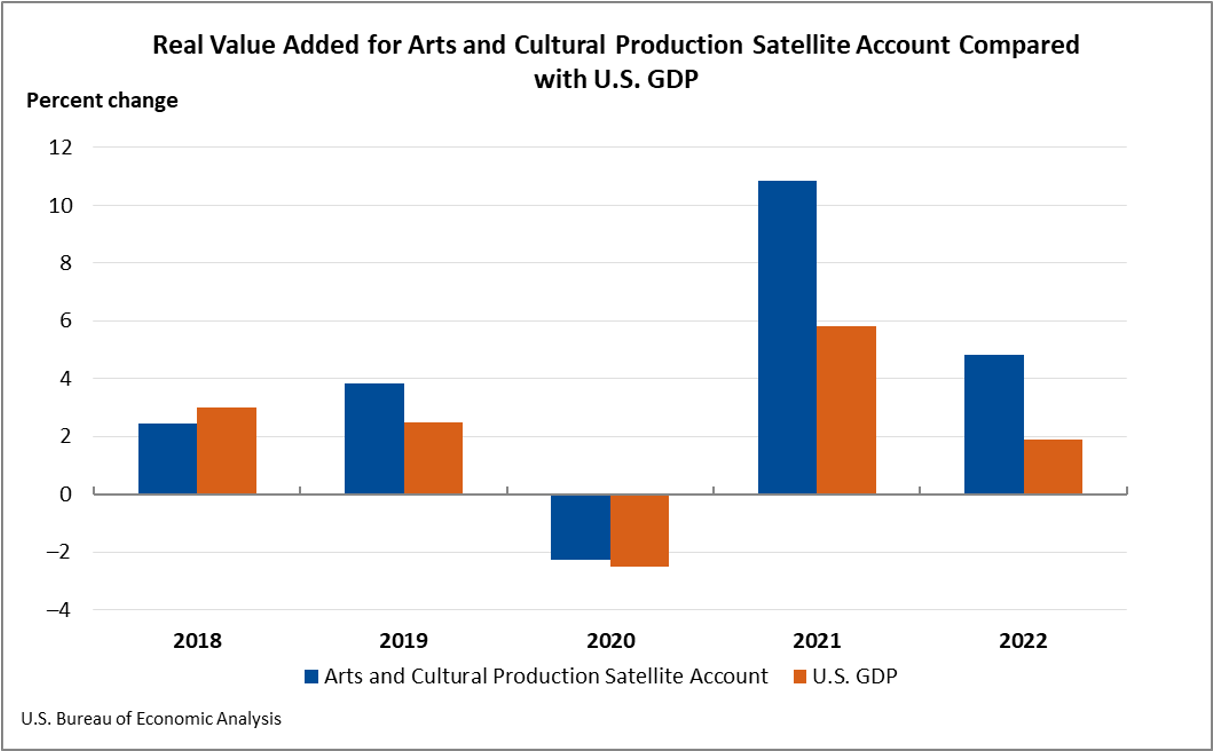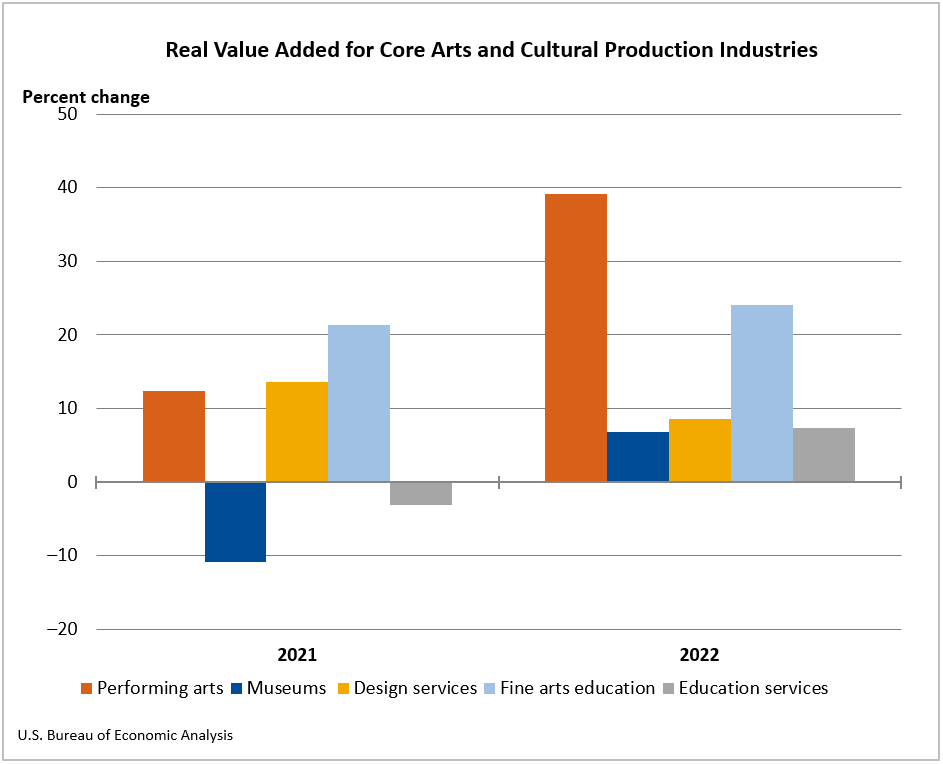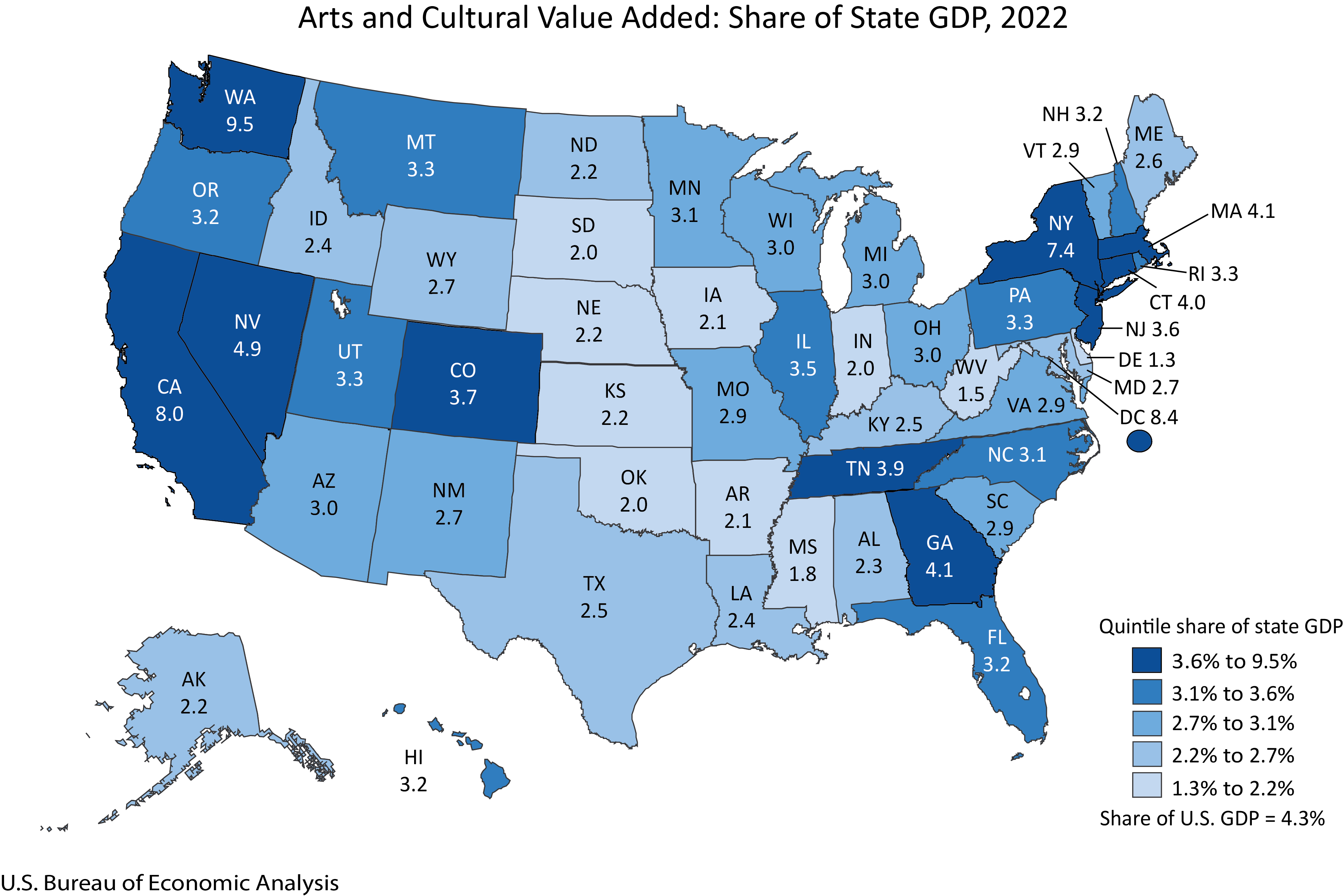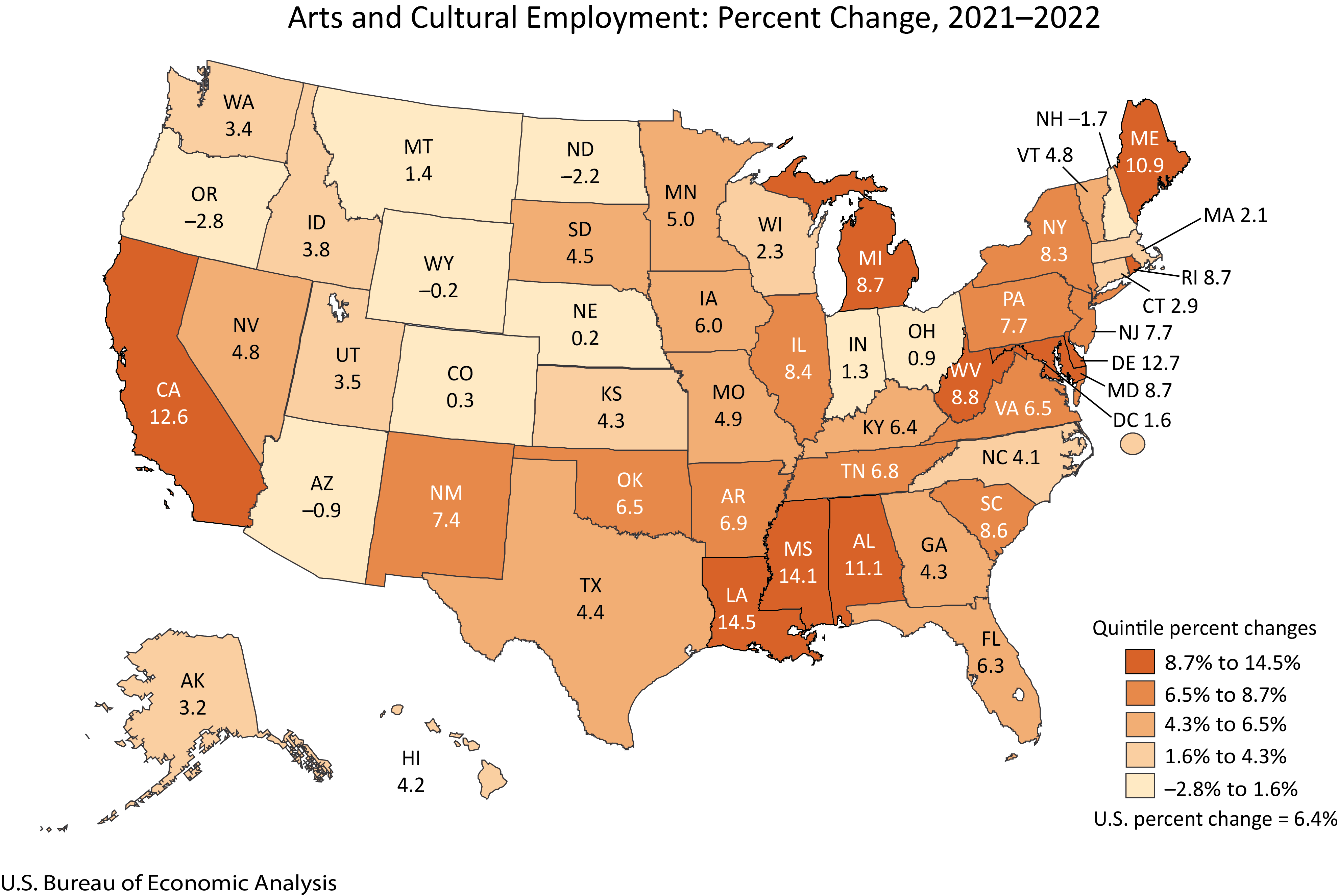News Release
Arts and Cultural Production Satellite Account, U.S. and States, 2022
New statistics for 2022; 2017—2021 updated
The Arts and Cultural Production Satellite Account released today by the U.S. Bureau of Economic Analysis (BEA) shows that arts and cultural economic activity, adjusted for inflation, increased 4.8 percent in 2022 after increasing 10.8 percent in 2021 (table 1). By comparison, the broader economy, as measured by real gross domestic product (GDP), increased 1.9 percent in 2022 after increasing 5.8 percent in 2021. Arts and cultural economic activity accounted for 4.3 percent of GDP, or $1.10 trillion, in 2022 (tables 2 and 3).
Real (inflation-adjusted) value added for core arts and cultural production industries, which include performing arts, museums, design services, fine arts education, and education services, increased 18.2 percent in 2022. Supporting arts and cultural production industries, which include art support services and information services, increased 1.4 percent in 2022 (table 1).
- Performing arts increased 39.2 percent in 2022 after increasing 12.4 percent in 2021. The leading contributor to the increase was performing arts companies, which increased 76.5 percent in 2022 after decreasing 27.8 percent in 2021.
- Museums increased 6.9 percent in 2022 after decreasing 10.9 percent in 2021.
- Design services increased 8.5 percent in 2022 after increasing 13.6 percent in 2021.
- Fine arts education increased 24.0 percent in 2022 after increasing 21.4 percent in 2021.
- Education services increased 7.3 percent in 2022 after decreasing 3.1 percent in 2021.
Nominal value added
Nominal value added (not adjusted for inflation) increased 7.8 percent nationally in 2022 (table 2). The leading contributor to the increase was core arts and cultural production industries (table 4). Supporting arts and cultural production industries increased 4.1 percent to a level of $825.6 billion; the leading contributor to the increase was information services. Core arts and cultural production industries increased 21.8 percent in 2022 to a level of $249.0 billion; the leading contributors to the increase were performing arts and design services.
In 2022, nominal value added in arts and cultural production industries increased in every state and the District of Columbia. The percent change across all states ranged from 23.9 percent in Connecticut to 2.0 percent in Nebraska (table 2).
In Connecticut—the state with the largest increase in value added—broadcasting, other information services, and design services were the leading contributors to the increase in value added. In Nebraska—the state with the smallest increase in value added—a decrease in other information services mitigated the increase (table 4).
For all states and the District of Columbia, the arts and cultural share of total GDP ranged from 9.5 percent in Washington to 1.3 percent in Delaware. The share for most states ranged between 2 and 5 percent. Washington, the District of Columbia, California, and New York were the only areas where the arts and cultural share of total GDP exceeded 5 percent (table 3).
The top arts and cultural production industries varied among the states. In Washington, publishing and retail industries were the leading contributors to the share of total state GDP. Government and broadcasting were the leading contributors in the District of Columbia. Other information services and motion pictures were the leading contributors in California. Broadcasting and other information services were the leading contributors in New York (table 3).
Employment
Arts and cultural employment nationwide increased 6.4 percent in 2022. The total number of arts and cultural jobs for the nation was 5.2 million. Arts and cultural employment increased in 45 states and the District of Columbia. The percent change across all states ranged from 14.5 percent in Louisiana to −2.8 percent in Oregon (table 8).
Louisiana had 55,212 jobs related to arts and culture, representing 2.8 percent of all jobs in the state. Retail industries and motion pictures were the leading contributors to the increase in arts and cultural employment in Louisiana. In Oregon, retail industries and publishing were the leading contributors to the decrease in arts and cultural employment (table 9).
Compensation
Arts and cultural compensation nationwide increased 4.3 percent in 2022. Arts and cultural compensation increased in all 50 states and the District of Columbia. The percent change across all states ranged from 17.2 percent in Michigan to 0.3 percent in California (table 8).
Update of arts and cultural production statistics
Today, BEA also released updated national-level arts and cultural production statistics on output, value added, intermediate inputs, employment, and compensation from 2017 to 2021, with new statistics for 2022, and updated state-level statistics on value added, employment, and compensation from 2017 to 2021, with new statistics for 2022. These revised and newly available statistics primarily reflect the incorporation of revised and newly available source data from the 2023 comprehensive updates of BEA’s National and Regional Economic Accounts. Combined with new and revised arts and cultural production-specific source data, these improvements allow the arts and cultural production statistics to capture the dynamics of this sector more accurately.
The reference year for the chained-dollar estimates of national-level arts and cultural production statistics is updated to 2017 from 2012.
BEA’s Arts and Cultural Production Satellite Account is supported by funding from the National Endowment for the Arts.
Next release: March 2025
Arts and Cultural Production Satellite Account, U.S. and States, 2023



